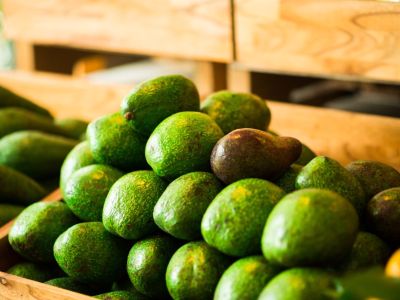The question stands, “How to tell if an avocado is ripe?” First off, picking avocados right off the tree will definitely not be a good barometer of maturity as avocados do not ripen on the tree. The problem is in knowing when do you harvest avocados. It isn’t always easy to discern the peak avocado harvest time. Are there some peak avocado harvesting time tips on how to pick an avocado that is ripe?
When to Harvest Avocados
An evergreen tree in the family Lauraceae, avocado trees bear fruit that can be round, oblong, or pear-shaped. The skin texture may be woody, pliable, smooth, or rough and of a greenish yellow, reddish purple, purple, or black color. That’s because there are three types of avocado: Mexican, Guatemalan, and West Indian, each with its own unique characteristics. Knowing when it’s avocado harvest time depends on the variety of avocado as well as the region it is being grown in. For example, ‘Haas’ avocados are the most commonly cultivated cultivar and they are generally ready for harvest in February, but can go as late as September. It greatly varies depending upon the weather, fertilization, and even the bearing pattern of the tree. The home gardener generally begins picking avocados when a few of the mature or full grown fruits have dropped. This is not a reliable guide for how to tell if an avocado is ripe, however, as the extended flowering of the fruit results in different stages of maturity on the tree at any one time. This is not to say that the largest fruit should not be picked first. When avocado picking, do pick the largest first as they are usually the most mature and will ripen in one to two weeks at room temperature.
Commercial Avocado Harvest Time
Commercial avocado picking in markets, such as Florida’s, have been decided by weight of fruit and time of year respective to each cultivar. Picking avocados when too immature results in fruit which does not ripen, but becomes rubbery, discolored, and shriveled. Florida avocados ripen between 60 and 75 degrees F. (16-24 C.). When temperatures soar, the fruit will ripen unevenly and develop an “off” flavor. Storage temperatures for the West Indian varieties should be about 55 degrees F. (12 C.) and 40 degrees F. (4 C.) for other Floridian cultivars. When the fruit is stored at temperatures below these, the skin may darken and the flesh will become discolored.
How to Tell if an Avocado is Ripe
When to harvest avocados and how to tell if an avocado is ripe are two questions which go hand in hand. We have already ascertained the when to harvest avocados question above, but given that a number of factors can affect avocado harvesting, how then can you tell when to pick your fruit? Here’s the deal. Avocados are unique in that they do not ripen on the tree. In fact, if you aren’t ready to harvest a bunch and eat them soon, the best place to store them is dangling on the tree. Ripe avocados have a uniformly soft flesh and this is the best indicator of readiness. Depending on the variety, the skin may be anywhere from yellowish green to reddish purple to almost black, and for this reason, skin color is not a good barometer of ripeness. The fruit of, for example, Hass, starts as a smooth, brilliant green and gradually the skin turns pebbly and purple-black in color. That color change doesn’t necessarily mean the avocado is ripe, but it is a cue. The longer the fruit is left on the tree, the higher the oil content and the richer the taste. The flavor of the fruit is generally pale to buttery yellow and bland to nut-like in flavor. Like all good things, though, leave it on too long and the oils will become rancid. Commercial growers use a “dry weight” test, which gives a measure of the oil content of the fruit letting them know when to harvest. If the oil content is low, the fruit is unripe and instead of getting soft, it will shrivel or stay rubbery. This isn’t exactly optimal for the home grower, however. So what are you to do? The best way to tell if the fruit is ready to be harvested is to pick one. Select a large, dark avocado. Leave it out on the counter at room temp to ripen or hasten the ripening by putting it in a paper bag. The fruit gives off ethylene gas, which hastens the ripening process. You can speed up this process even more by popping a banana or apple in with the avocado since they also give off ethylene gas. The fruit should soften within a week or two. If so, this is an indicator that the rest of the avocados are ready to harvest. If it shrivels or stays rubbery, be patient and leave the fruit on the tree for a little while longer. You may have to conduct this test a few times until the fruit is at its peak for harvesting, but a few lost fruit is a small price to pay for the dozens of perfectly ripe avocados coming your way. In summary, avocado harvesting is dependent on variety, color, size, and firmness. Regardless, when it’s avocado harvest time, growing and picking avocados is a nutritious and delicious exercise and well worth the effort. Guacamole, anyone?
